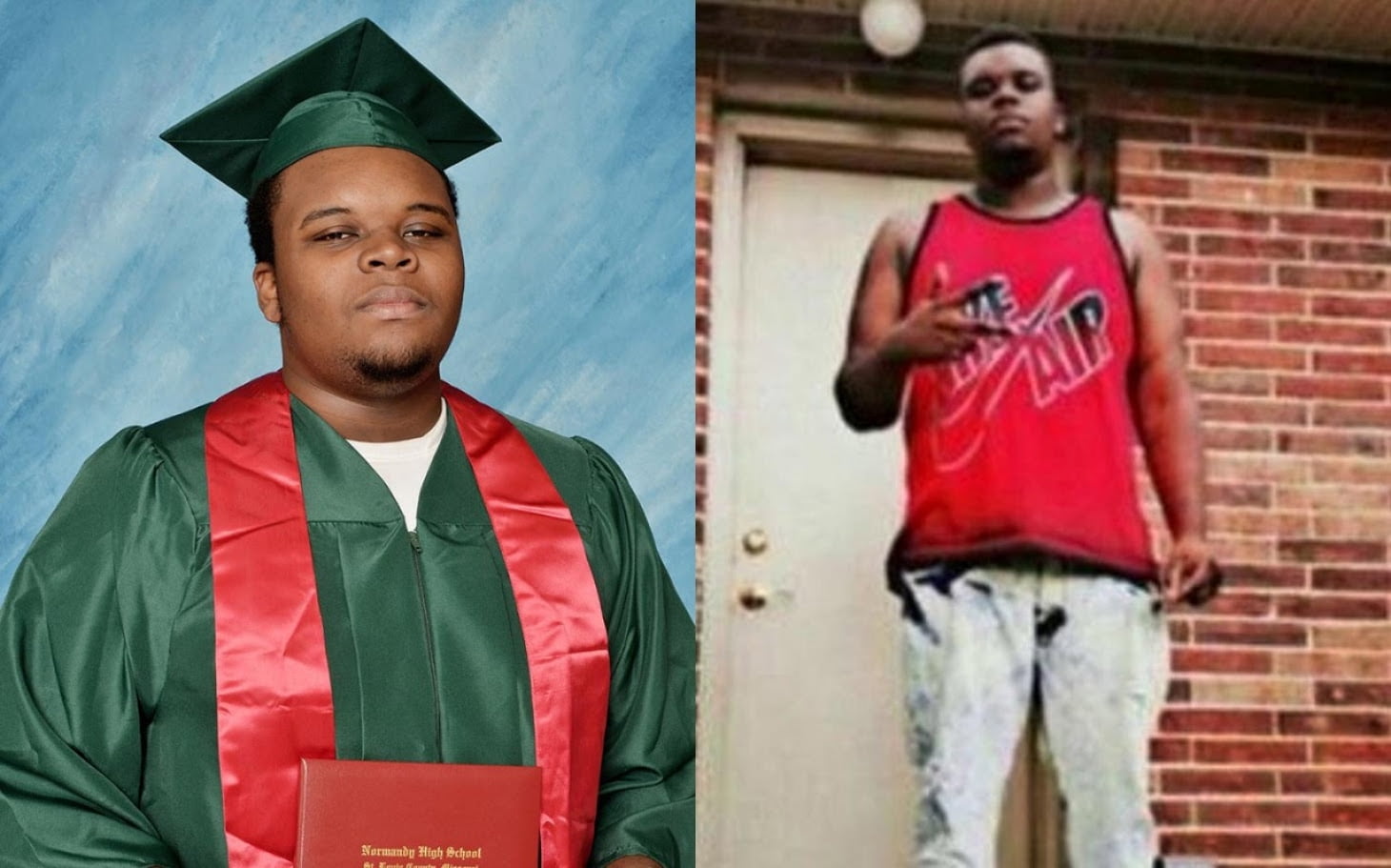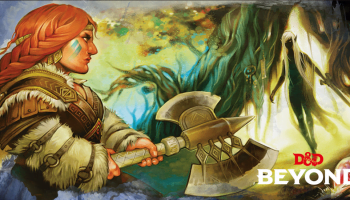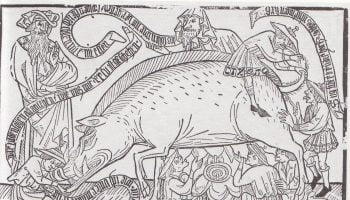Part XXX in our ongoing series on Race, Racism and the Middle Ages, by Jeremy DeAngelo. You can find the rest of the special series here.
The horrific events in Charlottesville began as a dispute over the interpretation of history. The dispute itself began over what, exactly, monuments to Confederate leaders mean, what lessons they convey, and what their presence in our public spaces tell us about today.
The “story” told of the Civil War—at least that which rests in much of the public’s imagination—is, as Ta-Nehisi Coates rightly argued in The Atlantic, a sanitized version of history. That story struggles to erase slavery; it is designed to benefit certain Americans’ views of themselves and to justify Jim Crow and its legal and social descendants.
The call to remove Confederate statues is part of an effort to repeal that toxic narrative.
History, in all of its details, can rarely support simple interpretations—and given all we have seen in the past weeks, we can see how misinterpretations of the past can lead to—and prop up—bigotry, hatred, and violence.
By way of demonstrating how important it is to complicate the narrative, I want to look more closely at the historical event discussed in one of The Public Medievalist’s recent installments: the massacres of Jews in the Rhineland in 1096. My introduction as an undergraduate to the texts recording these events led to some self-reflection that I believe is useful in our current time. Yes, this essay is about a white guy learning a lesson from the suffering of others. But clearly, as we can see, white guys still have lessons they—we—need to learn.
Narratives: Historical and Modern
It is easy, as human beings in the present, to create moral narratives out of past events. This is especially true when all we know about a historical event is from a simplified account in a textbook, a summary in a secondary source, or—increasingly—a movie, a TV show, or another piece of media. Such bare-bones accounts usually present conflicts as simple binaries, with easily identifiable villains and heroes. This allows us, or even requires us, to fill in the gaps with our own assumptions about the past and its people. A common quality of these narratives, consequently, is a kind of condescension toward the past. They promote the belief that we modern people are better than those who came before—more moral, more ethical, less prejudiced. “Oh, can you believe what used to be acceptable back then? Such a shame that bigotry and superstition held such sway. Thank goodness we know better!” This attitude is so common that I have found it to be many people’s default attitude when confronted by the past.
Such certainty evaporates when we face today’s controversies, however. If we were to encounter a rash of officer-involved shootings in the historical record, for example, we would likely not hesitate to diagnose it as an abuse of authority, or an imbalance between security and freedom in American society. I sincerely hope that people fifty years from now can smugly say of us: “Can you believe what used to be acceptable back then?”
Likewise, knowing the identities of those lost—Michael Brown, Tamir Rice, Philando Castile, and others—we would likely conclude that race, including personal as well as structural and institutional racisms, is a significant factor. (“Such a shame that bigotry and superstition held such sway. Thank goodness we know better!”) In reality, of course, these conclusions are frequently deeply politicized and disputed. If the old aphorism, that “journalism is the first rough draft of history” is true, the New York Times and Breitbart are drafting entirely different histories. The disparity between the two accounts crafted by these outlets is due, in part, to outlets like Breitbart telling a story that is more easily digestible for those drawn to simple narratives of good and evil in such circumstances—assumptions which are frequently self-serving. Identifying racism as the cause behind contemporary events casts blame upon a portion of the population—the police specifically, or white people more generally—and many are not willing to accept that explanation. Despite its obvious truth, they will go to great pains to reject it.
As a professor of medieval literature and culture it is my job to bring the past and present together. I do it in order to help us bridge this gap; to better understand our own prejudices by examining those of the past. It is even possible for us to better understand incidents of racial injustice today by looking at medieval examples. One of my profoundest moments of this sort of epiphany was when reading about the events of 1096.
The First Pogroms
The events of the Rhineland Massacres have already been recounted in this series, so I will only give some basic facts. On November 27, 1095, Pope Urban II gave a speech at the Council of Claremont which inspired the First Crusade. Caught up in the furor of reclaiming Jerusalem from the infidel, groups of armed pilgrims made their way to the Holy Land. Several of those traveling through the Rhineland attacked Jews in multiple German cities. Many were killed, many martyred themselves, and many others were forced to convert or die.
The most detailed accounts of these attacks come from Jewish writers, such as the anonymous author of The Narrative of the Old Persecutions (also known as the Mainz Anonymous) and the author (or authors) of the Chronicle of Solomon bar Simson. Christian accounts of the First Crusade, if they mention the events in Germany at all, do so briefly. And they are not typically sympathetic to the Jews.
The attacks spread along the route of the advancing armies, hitting the cities of Speyer, Worms, and Mainz. In both Worms and Mainz, the bishops gave the Jews shelter within their own buildings. But in both cases, their protection proved ineffective: the attackers gained access and slaughtered those inside. The perpetrators of the massacres—or at least those among them who were Crusaders and not local agitators—never made it to Jerusalem, and never even joined bulk of the Crusading army. As they travelled east, they continued to attack Jewish communities in Regensburg, and in Prague. But when they got to the Kingdom of Hungary, they found their way barred. The authorities were prepared for them, and clearly had no desire for the Crusaders to bring their chaos within Hungarian borders. The bands were compelled to pillage for supplies, and when local forces mustered a defense, the Crusaders were defeated and dispersed.
“Difficult” Victims
This broad sketch of the massacres offers a straightforward story of good and evil. While many people may not be familiar with this specific moment in history, its telling conforms to an expected pattern of evil oppressors and noble victims. But when reading the primary sources, we encounter details that may trouble our expectations. What do we do when the actors in our historical dramas refuse to play their roles? And seeing this, how do we understand them as people, rather than one-dimensional characters?
This was the dilemma I faced as an undergraduate when I first read the primary sources that describe the massacres of 1096. I was prepared, when I started my reading for a history class, to encounter a simple narrative that reinforced my assumptions about the past, about the nature of prejudice, about the conduct of persecuted minorities. I did not expect to be intellectually challenged. Instead, once I finished reading the Jewish accounts of the massacres, I was unsettled. This was because the people who I instinctively labelled “heroes” in these stories were not acting the way I expected.
One of the troubling aspects of the massacres was, for me, the willingness of the Jews to kill themselves pre-emptively. In this, these narratives differ from Christian accounts of martyrdom, which do not encourage suicide—quite the opposite. In stories of Christian martyrdom, the atrocities committed against the saint’s body and their willingness to endure them are typically the longest and most graphically detailed portions of those works. In contrast, many of the assaulted Jews in 1096 killed themselves instead of allowing the Crusaders to murder or convert them. Some of those unwilling or unable to do so, such as children, were killed by their family or community members. The acts are understandable. They were efforts by the Jews to retain control over their fates rather than relinquish it to their persecutors, as well as to save their souls from forced conversion. It was also part of a long tradition of Jewish martyrdom that goes at least as far back as the siege of Masada in the first century CE. Nevertheless, it is one thing to accept something intellectually and another not to react viscerally to passages such as this one from Anonymous of Mainz:
There was a notable lady, Rachel the daughter of R. Isaac ben R. Asher. She said to her companions: “I have four children. On them as well have no mercy, lest these uncircumcised come and seize them and they remain in their pseudo-faith. With them as well you must sanctify the holy Name.”[…] She took Isaac her small son—indeed he was very lovely—and slaughtered him. She…said to her companions: “Wait! Do not slaughter Isaac before Aaron.” But the lad Aaron, when he saw that his brother had been slaughtered, cried out, “Mother, Mother, do not slaughter me!” He then went and hid himself under a bureau. She took her two daughters, Bella and Matrona, and sacrificed them to the Lord God of Hosts, who commanded us not to abandon pure awe of him and to remain loyal to him. When the saintly one finished sacrificing her three children before our Creator, she then lifted her voice and called out to her son: “Aaron, Aaron, where are you? I shall not have pity or mercy on you either.” She pulled him by the leg from under the bureau, where he had hidden, and sacrificed him before the sublime and exalted God. She then put them under her two sleeves, two on one side and two on the other, near her heart. They convulsed near her, until the Crusaders seized the chamber.
This episode is written to create a dramatic and emotional narrative of Jewish martyrdom. And it is not alone: that parents killed their children to spare them from the Crusaders was widely reported in these chronicles. In the context of these chronicles, for these medieval Jewish people (and many other medieval societies) the integrity of one’s faith and the faith of their children—even at the cost of their lives—was paramount. And they may have feared that their fates at the hands of the Crusaders would have been much worse, that death in this manner was merciful. Such actions which to us at first might seem heartless—possibly even fanatical—make perfect sense in the context of their time, and the horror of the moment.
Another aspect of the martyrdom stories that caught me off guard was much less lurid. Probably it is because I was both Catholic and familiar with medieval Christian texts; I was accustomed to a particular type of rhetoric surrounding descriptions of the Christian faith—almost always complimentary. In contrast, The Narrative of the Old Persecutions and the Chronicle of Solomon bar Simson are defiantly anti-Christian texts. You can see, in the passage above, where the author describes Christianity as a “pseudo-faith.” Elsewhere, Christ is referred to as “a bastard and a product of sin and menstruation,” and that he is not a god and so “cannot profit and cannot save for he is worthless.”
My initial reaction to this was something that deserves introspective examination. I was prepared for the violence and anti-Semitism that I found in the texts; they fit a narrative that I was prepared to accept. But I was not prepared to have my own identity attacked. I had assumed, with no reason to do so, that medieval religious minorities would respect the beliefs of the majority—even when dying at the hand of sectarian violence. But why should they? But even upon thinking through that, I remained disturbed at the anti-Christian words in these Chronicles—which disturbed me anew.
Bringing the Past to Today
As a (white, Christian, straight, male, cisgender) undergraduate in the early 2000s I did not have this terminology at the time, but it is clear to me now that I was reading from a place of privilege. Even while reading about people whose beliefs and lives were attacked in ways that mine never would be, I was offended at even the smallest expression of disapproval on their part. I was upset that they were not living up to my expectations of how the targets of persecution conduct themselves. I was shocked by their anger.
Even then, I knew that this expectation was deeply unfair. But I didn’t know what to do with that knowledge. I knew I was foolish to expect anything else from historical texts that detail oppression. And medieval Jews, of course, would not (and do not) believe in Christ. Furthermore, these particular Jewish writers were recounting Christian mass-murders, inspired by Christianity, upon their community, their loved ones, and their religion. To expect anything other than rage and scorn for Christianity is a monstrous double-standard, an attitude which perpetuates injustice as much then as it does today.
It is a position of privilege, as well, that allows us to take a step back and think critically about accounts of other people’s suffering. My introduction to the massacres—and the way I initially reacted to them—has never been far from my mind. This is likely why I have applied it to my own understanding of public reaction to prejudice today—particularly in the case of the police shootings of African-Americans. It may seem awkward to transition from medieval anti-Semitism to the rights of African-Americans today, but in truth prejudices against both these groups have often intertwined. Now, 2017 is not 1096; but, we bring our expectations of today to our reading of the past. Many of the expectations we have for minorities are the same both for then and now.

When, in 2014, the killing of young black men began to bring more open scrutiny to policing standards, the persistence of racism in America, and the role of governmental institutions in perpetuating it, many sought to pre-empt criticism by attacking the characters of those who had been killed. Conservative commentators argued that they didn’t dress right; that they had criminal records; that they were “no angels.” The implication was that these individuals did not deserve sympathy, and, by extension, rights. This of course goes against the principle of equal protection under the law; we do not need to find someone sympathetic for them to be eligible for human rights. But it remains a constant tactic to describe someone at the center of an incident like these as someone who is, or is not, a good person. Our ability to identify with them becomes the standard by which we decide whether we should care.
Respectability Politics
This has been one of the key strengths of nonviolent resistance. During the Civil Rights Movement, for example, the optics of peaceful protest were considered extremely important for bringing public opinion over to the side of African-Americans. As Richard Cohen of the Southern Poverty Law Center explains,
The violence was being perpetrated by the oppressors, not the oppressed and that was an incredibly powerful message and an incredibly important tool during the movement.
They presented people on the fence with images of peaceful protesters who were less-easily dismissed as violent, uncivilized troublemakers. The attempt to smear present-day targets of racism and brutality is a mirror image of this tactic—instead of presenting a picture of someone with whom the general public can sympathize, they provide them with a person they can despise and fear.
We see in this the trap of respectability politics. The American public, as a whole, has developed an archetype of the deserving victim: their suffering is silent, and noble, and they are manifestly better people than those who persecute them. Our images of great civil rights leaders of the past conform to these expectations, even when reality was much more complicated—and this is why threats to undermine these images are seen as effective countermeasures. Any deviation from the expectation of respectability is grounds for the rescinding of sympathy. But this is a trap: if rights are contingent upon being sympathetic, they are not rights. And I fell into this trap. That is why, when I encountered the Jews of 1096 in my class texts, I responded how I did. They were not conforming to my unfair expectations.
Such an attitude becomes a mockery, however, when faced with the insurmountable cruelty, violence, and outrage of the massacres. Clearly, many of the Jews of the Rhineland were deeply angry at the way they had been treated. They hated the religion of the people that persecuted them and were not afraid to write it. And some believed so strongly in their faith that they were willing to destroy their lives and those of their children rather than give it up. Such sentiments might appear outrageous to us today, at least when we see them put into practice. But the price paid by the Jews was far too high to let our squeamishness stand in the way of recognizing where the real wrong lies in this event.
Difficult Histories for a Difficult Present
This is the value of historical study. It is one of the reasons that professors like me present difficult texts to our students—so that they might come to grips with the actuality of the past, rather than our popular narratives. Being able to confront one’s unexamined assumptions in the classroom, as I did, with an event safely in the past, empowers us to do the riskier and more necessary work of confronting them in our present. After all, if we cannot be brave enough to interpret the past fairly, what hope can there be for the present?
Nearly every historical text has some surprise in it for the uninitiated. It is this surprise that I try to include in all of my syllabi and class discussions today. Didn’t the women of the past “know their place” and acquiesce to their husbands? Meet Margery Kempe. Were the people of the Middle Ages completely in awe of the Catholic Church and dare not criticize it? Read The Pardoner’s Prologue (or numerous other portions of The Canterbury Tales). Was the Middle Ages a period in which people of racial, religious, or national difference were completely segregated? What do you think? Confronting all of these contradictions to our lazy assumptions about the past teaches us how infrequently gross generalizations about groups of people prove to be true. And it is a principle which should be carried over into our conduct today. How often do we read things from the perspective of someone unlike us in the present day? It has the potential to be as unfamiliar as anything written far in the past, and it carries the same lessons.
Critiquing prejudice today is hard. It is especially hard because it involves critiquing yourself. Yet it takes quite a bit of lying to yourself to see a world of clear-cut heroes and villains in most of our world today. Those sinned against almost always have messy, complicated lives, and have made mistakes; no one should expect that their persecutors have no redeeming qualities. This is precisely what we find when we examine nearly all of the incidents of racism, police brutality, or institutional blindness raised by the Black Lives Matter movement. We want heroes, we want villains, but what we get are people. A too-easy reading of history can lead us to believe that this is something we can expect. But the Jews of the Rhineland put the lie to that narrative. They may not meet our expectations. But they deserve our sympathy nonetheless. And if we can identify this problem in the past, we should be able to apply the lesson to the present. We only need be courageous enough to act.
The Public Medievalist does not pay to promote these articles, so we would love it if you shared this with your history-loving friends! Click to share with your friends on Facebook, or on Twitter.









Thank you Jeremy. An excellent article.